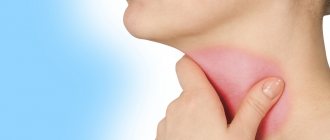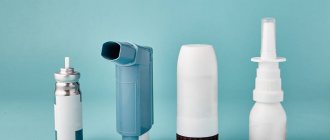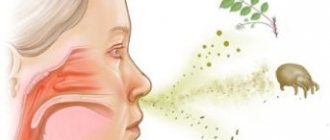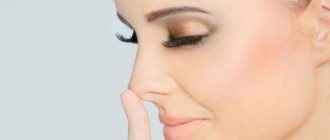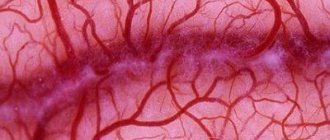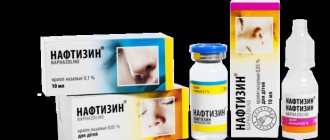Many factors provoke changes in the structure of the tissues of the nasal cavity. Therefore, much more often than it might seem at first glance, the question arises, how to restore the nasal mucosa?
But in order for treatment to be as effective as possible, it must be carefully selected based on an analysis of the causes of the problem and its severity.
Moreover, therapy should be started as early as possible, since dysfunction of the mucous membrane negatively affects the body’s ability to resist attacks from viruses and bacteria.
Therefore, people with this problem are much more at risk of developing acute respiratory infections and other infectious diseases transmitted by airborne droplets.
Causes of damage to the nasal mucosa
The mucous membrane can be injured as a result of exposure to many factors. But most often this is how the effect of nasal drops with a vasoconstrictor component manifests itself.
Substances of this kind have drying properties and, after prolonged use, become addictive, resulting in the development of drug-induced rhinitis.
With pathology, swelling in the nose constantly occurs, which can only be eliminated by introducing new doses of the drug.
The mucous membrane also becomes thinner, and since it is extremely difficult for a patient to stop using Naphthyzin or other similar medications, the situation is constantly getting worse.
If you do not stop using vasoconstrictor drops in time, surgical intervention of one kind or another may be required to normalize nasal breathing.
Other reasons include:
- regular inhalation of heavily polluted air (when working in a weaving factory, chemical production, etc.);
- penetration of a foreign body into the nasal cavity;
- drug use;
- inhalation of hot steam;
- severe curvature of the nasal septum, contributing to the development of other ENT pathologies;
- chronic diseases of the kidneys, cardiovascular, endocrine systems, etc.
Temporary symptoms of mucosal damage may be observed after surgery. They can also be a consequence of taking methamphetamine and a number of other drugs that burn the mucous membrane.
Symptoms and signs of mucosal damage
It is easy to suspect a problem if at least several of the following signs are present:
- feeling of dryness;
- itching and burning;
- persistent runny nose and crusting;
- difficulty in nasal breathing;
- disturbances of smell;
- nosebleeds.
Diagnostics
Only an ENT doctor can make the correct diagnosis. To do this, the doctor performs a rhinoscopy, that is, examines the inner surface of the nasal passages using a special device - an endoscope.
It is a thin tube with a video camera attached to the end. Therefore, the procedure is painless, but may be accompanied by minor discomfort.
It is also necessary to establish the cause of the problem. For this purpose, based on data on the general condition of the body obtained from the patient, the following are prescribed:
- study of the level of basic hormones;
- electrocardiogram and other studies of the cardiovascular system;
- Ultrasound of the abdominal organs;
- psychological examination, etc.
How can you restore the nasal mucosa at home?
In general, to restore the nasal mucosa, there is no need to go to the hospital. Therapy is always carried out in an outpatient setting or at home.
The apartment must provide optimal conditions for normal breathing, that is:
- maintain the air temperature within 18–22 °C;
- Avoid long-term operation of heating devices that dry out the air;
- Maintain air humidity within 50–60%.
Attention
It is recommended to give up smoking and alcohol, significantly reduce the amount of seasonings used in cooking, that is, adhere to a healthy lifestyle.
It is very important to take walks every day, lasting at least an hour.
All these simple measures will help the mucous membrane recover from a runny nose and begin to work with the same efficiency, fully protecting a person from the negative effects of cold air, as well as the penetration of bacteria and viruses into the body.
However, just changing lifestyle in situations characterized by more than average severity is not enough.
In such cases, additional drug therapy is prescribed. Treatment may include various means, the choice of which is determined by the cause of the disorder. But there are universal medications used for damage to the mucous membrane. This:
1
Saline solutions (Aqualor, Humer, No-sol, Marimer, Aquamaris, Physiomer, Dolphin, saline and others). They effectively eliminate dry mucous membranes and cleanse the nasal cavity of impurities and microorganisms.
Therefore, the use of saline solutions not only alleviates the patient’s condition, but also serves to prevent the development of acute respiratory infections.
Medicines in the form of drops and sprays can be used as needed, but complete rinsing with a syringe, bulb or special kettle is done up to 5-6 times a day.
2
Vegetable oils. They cover the inner linings of the nasal cavity with a thin film, effectively nourishing the dry mucous membrane.
For example, you can use sea buckthorn oil or peach oil, but you can also choose the more traditional sunflower, corn or olive oil.
But in the first case, the oil will additionally have a regenerating effect, which will come in handy after a burn or serious mechanical damage.
The otolaryngologist may also recommend the use of various drops and sprays with immunostimulating, wound-healing and anti-inflammatory properties.
If the problem arose after sinusitis, ointment or drops with antibiotics may be prescribed to completely eliminate the bacterial microflora.
If there are defects of the nasal septum, surgical intervention is indicated, and if chronic ailments are identified, the only possible way to normalize the functioning of the mucous membrane is to regularly undergo full courses of appropriate therapy.
But any self-medication can be fraught with the development of complications.
ENT specialists often hear the question, is it possible to restore the mucous membrane after amphetamine? As is known, this narcotic substance, especially in its pure form, “burns” tissues, and with prolonged use leads to serious structural changes.
You can help the sick, but only after completely giving up all drugs. The nature of therapy is determined individually based on the assessment of the condition of the mucous membrane and the duration of amphetamine use, but you should not count on a quick effect.
Prevention of dry nasal mucosa
It is not difficult to avoid drying out and restore the nasal mucosa; for this you need to follow these rules:
- If a runny nose is treated with drops, you can use them for no more than 7 days.
- It is necessary to maintain the humidity level in the room.
- If the air in the apartment is too dry, it is recommended to spray it several times a day.
- For use at work or school, doctors recommend purchasing a ready-made solution of sea water or saline solution.
- The saline solution will help flush out your nasal passages during the day when crusts have formed in your nose.
- Rinsing the nose will reduce the rate at which crusts form and will also make it easier for a person to breathe.
- The patient needs to drink more clean water during the heating season; a lack of fluid leads to malfunctions of the body.
- When cleaning dusty rooms, it is necessary to use a respirator or periodically go out into fresh air to clear the nasal passages of dust.
- In autumn and winter, as well as during periods of vitamin deficiency, the nasal passages should be washed daily with plain warm water.
- It is necessary to monitor nasal hygiene and remove crusts in a timely manner.
Following these basic rules will help avoid illness and protect the nasal mucosa. But if it was not possible to prevent the drying out of the mucous membrane, you should not self-medicate, but seek help from a specialist; the specialist will tell you why the problem arose and how exactly it needs to be dealt with.
Video: Stuffy nose, baking soda and hydrogen peroxide
Changes in the structure of the nasal mucosa are caused by many reasons, the most common of which is long-term use of vasoconstrictor drops. The instant effect of these drugs, which allows you to quickly cure a runny nose, with long-term use has an atrophic effect, causing dryness, stuffiness and crusting. Also, the use of drops increases blood pressure and has a negative effect on the cardiovascular system. It is very difficult to restore the destroyed mucous membrane after them. Both medications and folk remedies can help with this.
How to restore the nasal mucosa in a child?
In a child, the most common cause of damage to the mucous membrane is the entry of a foreign body into the nasal passages, which is not always immediately noticeable.
In such cases, it constantly injures the internal membranes and provokes disruptions in its functioning.
The best way to deal with the situation is to remove the foreign body. After this, it is recommended to use saline solutions and oils to quickly restore the mucous membrane.
After a runny nose, serious injuries requiring treatment are rare in children.
However , to avoid them, you should maintain a normal level of air humidity in the nursery and moisturize the dry mucous membrane with saline solutions, using drops or spray depending on the age of the child.
Signs of damage to the nasal passages
With vasomotor and allergic rhinitis, the tone of blood vessels is disturbed. Hyperemic, cyanotic, pale, swollen nasal turbinates are noted. With vasomotor rhinitis, there is a feeling of nasal congestion that does not allow air to pass through. From time to time, only one half of the nose begins to breathe. The patient does not breathe normally through the nose because the thickness of the inner lining of the nose is changed.
If chronic atrophic rhinitis develops, the nasal passages expand. There may be crusts in the nose. The nasal mucosa becomes abnormally thin. It is dry and pale in color. Full breathing becomes impossible.
The patient is bothered by unpleasant symptoms:
- tearing eyes;
- congestion in the ears;
- periodic recurrences of a runny nose;
- constant sneezing;
- nasality;
- viscous, mucous, copious discharge from the nasal cavity;
- impaired perception of smells;
- snore;
- sore throat;
- coughing attacks;
- crusts, dry nose;
- mucus drips down the back of the throat.
Drops that restore the nasal mucosa
Depending on the cause of the disorders, patients may be prescribed:
1
Immunostimulants, including homeopathic ones (Derinat, Delufen, Rinitol Edas 131, etc.). They enhance local immunity, increasing the body's resistance to viral and bacterial attacks. In addition, homeopathic spray Delufen additionally moisturizes the mucous membranes, eliminating the discomfort caused by their dryness.
2
Pinosol is a complex preparation of plant origin containing essential oils and vitamins. Its use helps eliminate a runny nose and eliminate swelling, and the oils carefully restore the mucous membrane and have an antiseptic effect.
However, the rich composition of the medication causes an increased risk of developing allergies, especially in people suffering from hay fever. Therefore, for the first time, you should inject a minimal amount of the product into one nostril and evaluate the body’s reaction.
3
Euphorbium Compositum is a homeopathic remedy that effectively prevents drying out of the mucous membrane and restores its structure.
4
Solcoseryl. Available in the form of ointment and gel. The drug has pronounced wound-healing properties. Cotton swabs are soaked in it and inserted into the nasal passages for 15–20 minutes.
5
Local corticosteroids (Nasonex, Flixonase, etc.). The medications are based on glucocorticoid hormones, which are not absorbed into the blood, but effectively restore the mucous membrane.
Methods for restoring the condition of the nasal mucosa
The main consequences of using vasoconstrictor nasal drops include disruption of the integrity of the mucous membrane, the onset of drug-induced rhinitis, and bleeding. Measures for rehabilitation of the mucous membrane are known: this is hydration and strengthening of blood vessels.
Since sudden cessation of taking vasoconstrictor nasal medications causes “withdrawal syndrome,” first of all, doctors recommend replacing them with alternative nasal medications (homeopathic, seawater-based, with natural oils), then physiotherapy.
You can also resort to traditional medicine methods that have already been tested for centuries.
The simplest composition of a spray or drops based on sea water is a saline solution with an active substance concentration of about 9 g/l (isotonic) or 20 g/l (hypertonic).
The action of preparations based on sea water is based on the property of salt to retain moisture. The advantages of these products are environmental friendliness, possibility of use during pregnancy and lactation, applicability in early childhood, non-addiction.
The spray form allows you to evenly distribute the product throughout the sinuses and the entire nasopharynx.
Sea water has the following qualities:
- antibacterial effect;
- moisturizing the mucous membrane;
- reduction of swelling;
- acceleration of tissue regeneration;
- local strengthening of immunity.
The therapeutic effect of nasal sprays and drops occurs within 5 seconds after use and lasts for 4 hours.
Reliable drugs include a series of nasal rinses in the form of drops and sprays of the Aqualor brand. It has remedies used for sinusitis, rhinitis, adenitis, and therefore can be an adequate replacement for vasoconstrictor drops.
When spraying the drug onto the irritated mucous membrane, a burning sensation is observed due to exposure to salt, which goes away within 2 minutes.
Another well-known brand is Marimer, which produces sprays that can be used daily as part of complex therapy until the problem is completely eliminated.
You can also use sprays based on sea water - “Aquamaris” and “Quix”.
Regardless of the drug chosen, irrigation of the nasal mucosa must be done 4 times a day for 7 days.
Drops and ointments based on natural oils include those preparations that do not contain synthetic antihistamines.
The oils in the base of the preparations are not addictive, have an antiseptic effect, and reduce swelling.
But the effect of these funds is cumulative. Moreover, products based on natural ingredients cause allergic reactions in 12% of cases.
Common brands include Pinosol (with pine oil), Doctor Theiss Nazolin (with eucalyptus oil), Sinupret (with peppermint oil).
The drugs under consideration can be used for inhalation as an effective way to restore the nasal mucosa after vasoconstrictor drops.
Inhalations are the most gentle way to use these medications without traumatic contact with the nasal mucosa.
Note! Preparations based on natural ingredients are indicated for adults and children over 5 years of age.
How to restore the nasal mucosa after vasoconstrictor drops becomes obvious: essential oils relieve irritation and swelling caused by drops, and also disinfect the nasal area to prevent inflammation caused by vascular injuries.
Natural oils of coniferous trees - pine, cedar, eucalyptus - should be used in the form of inhalations.
After long-term treatment with vasoconstrictor drops, strong addiction occurs, so the question of how to restore the mucous membrane with folk remedies and homeopathy becomes relevant.
There are two main ways to carry out inhalations:
- A few drops of oil are poured into the aroma lamp bowl and diluted with water. As the candle burns, the oil evaporates, filling the space with its aroma.
- Boil water in a saucepan, then remove it from the stove and drop a small amount of oil into the water. During 25 minutes of cooling the water, patients inhale medicinal vapors.
Homeopathic medicines have the following properties:
- reparative (restoration of blood flow);
- antiallergic;
- anti-inflammatory.
The use is appropriate for the treatment of drug-induced rhinitis after vasoconstrictor drops.
Drugs in this group normalize the tone of the mucous membrane of the paranasal sinuses, as a result of which metabolic processes improve, breathing becomes freer, and the epithelium is actively renewed.
It is important to know! Otolaryngologists report how to restore the nasal mucosa after vasoconstrictor drops using homeopathic medicines: it is necessary to ensure that the product contains a sodium chloride solution in a concentration of at least 0.9%.
This will help relieve atrophy and dryness of the mucous membrane - the main factors of discomfort.
Well-known products include preparations based on plant components and minerals: “Euphorbium compositum S”, “Edas-131 Ritinol”, “Delufen”.
The use of these drugs is discussed in the table.
| Drug name | How to restore the nasal mucosa after vasoconstrictor drops: dosage of homeopathic medicines |
| Euphorbium compositum C (spray) | 2 doses 3-6 times a day for 4 days |
| Edas-131 Ritinol (drops) | 3 drops in each nasal passage 3 times a day |
| Delufen (spray) | 1 dose every 60 minutes up to 8 times a day |
All drugs for mucosal restoration are prescribed for a course of no more than 7 days. To reduce swelling, it is recommended to use homeopathic lozenges.
To restore the nasal mucosa, it is recommended to use propolis. Its advantages, unlike vasoconstrictor drops, include the fact that it has therapeutic properties, and not only eliminates the symptoms of the disease.
Properties of propolis:
- antibacterial effect;
- relieving inflammation;
- reparative effect on the mucous membrane.
To restore the nasal mucosa after vasoconstrictor drops, you need to have information about such forms of propolis release as:
- alcohol tincture;
- honey extract;
- water solution.
To use alcohol tincture of propolis, cotton applicators are required.
First, they should be moistened in the tincture, then in vegetable oil and inserted into the nasal passages. Leave for 30 minutes. Repeat 2 times a day. However, with prolonged use, such a remedy dries out and peels off the mucous membrane.
Propolis honey has minimal irritating effect. It must be diluted with warm boiled water in a ratio of 1:3 and dripped into the nose. Repeat 3 times a day.
The aqueous solution is also low in concentration, so its side effects are negligible. This form of medicine is used in the same way as honey extract.
Be careful! Propolis is the strongest allergen. Influencing the mucous membrane, it causes a burning sensation. Long-term use of propolis-based drugs suppresses the body's immune system.
Aloe leaves are known for their healing properties. They contain essential antioxidants and minerals that promote mucosal regeneration.
On the outside of the aloe, you need to cut off 1 leaf, wash it, and cut off the spines. Grind until a uniform mass is obtained. Squeeze the juice through cheesecloth. Dilute with water in a 1:1 ratio. Place the solution into your nose. Repeat 2 times a day.
Within 5 hours after use, the product activates the body's defenses, allowing you to independently fight factors that cause dryness and irritation of the mucous membrane.
No less effective are drops prepared at home from healthy products: beets, onions. You can also make your own saline solution and drops based on healing oils.
- Recipe with beet juice. 2 drops of freshly squeezed beet juice are instilled into each nostril 2 times a day for 3 days. You can add honey to the juice in a 1:1 ratio.
- Recipe with onions. It is necessary to chop 1 head of onion, pour in vegetable oil so that it covers the onion by 3 mm. Let it brew for 2 hours. Squeeze the mixture through cheesecloth. Use as an external nasal remedy.
- Recipe with salt. Add 0.5 tsp to 500 ml of boiled water at room temperature. sea salt (can be replaced with table salt), stir until the main component is completely dissolved. Use to rinse nasal sinuses.
- Recipe with eucalyptus oil. Add 3 drops of eucalyptus essential oil to 100 ml of vegetable oil. Place 2 drops in each nostril 2 times a day for 3 days.
To reduce the risk of disruption of the nasal mucosa, it is necessary to minimize the effect of the following factors:
- Mechanical disruption of the integrity of the nasal mucosa (due to injury).
- Drug-induced disruption of integrity (use of vasoconstrictor drops for more than 7 days).
- Possibility of deviated nasal septum.
- Chemical disruption (inhalation of toxic substances).
During colds, it is better to use saline solutions; they will effectively clean the nasal passages and will not damage the mucous membrane.
The task of the nasal mucosa is to humidify the air entering the lungs and filter pathogenic microorganisms. Violation of its tone after vasoconstrictor drops leads to various disruptions in the functioning of this organ and to diseases.
Restoring the health of the mucous membrane is possible with natural preparations based on sea water, oils or healthy products.
How to get rid of vasoconstrictor sprays for a runny nose?
Vasoconstrictor drops are widely used in ENT pathology due to the development of a pronounced and rapid therapeutic effect. However, the use of these drugs can have a negative effect on the functioning of the cardiovascular system and increase blood pressure.
In addition, long-term use of such drops leads to the development of addiction, when the effectiveness of their use ceases to be noted. Increasing the dosage and frequency of administration also does not improve this situation.
Another negative property of these drugs is the development of mucosal atrophy and the appearance of symptoms such as a feeling of dryness, nasal congestion, crust formation, and the possibility of developing nosebleeds.
Principles of treatment
Restoration of the nasal mucosa after vasoconstrictor drops includes the following areas:
- the use of products that have a healing effect;
- use of corticosteroid drugs;
- carrying out physiotherapeutic procedures;
- use of traditional medicine;
- symptomatic treatment aimed at moisturizing the mucous membrane and reducing itching;
- use of immunostimulating agents;
- Spa treatment.
Read the popular article on the site: Menopause in women: symptoms, age-related characteristics, treatment with effective methods.
How to restore using folk remedies?
Dependence on nasal drops, especially Naphthyzin, is the most common cause of problems with nasal breathing.
There are many traditional medicine recipes that help restore mucous membranes burned after vasoconstrictor drops, but not all of them are effective or safe.
After Naphthyzin, it is recommended to use products with wound-healing, anti-inflammatory, anti-edematous and antiseptic properties. For example:
- Squeeze the juice out of an aloe leaf, mix it with an equal amount of water and drop 5 drops into each nostril. every 2 hours.
- 1 tbsp. l. Chamomile flowers, calendula or other similar medicinal plant materials are poured into a glass of water, brought to a boil and simmered over low heat for 15 minutes. Cool the broth and rinse your nose with it up to 6 times a day.
- Mix 10 drops. peach and eucalyptus essential oil. Dip cotton swabs in the resulting mixture and insert them into the nostrils for 15 minutes twice a day.
Propolis to help the nasal mucosa
To restore the nasal mucosa, it is recommended to use propolis. Its advantages, unlike vasoconstrictor drops, include the fact that it has therapeutic properties, and not only eliminates the symptoms of the disease.
Properties of propolis:
- antibacterial effect;
- relieving inflammation;
- reparative effect on the mucous membrane.
To restore the nasal mucosa after vasoconstrictor drops, you need to have information about such forms of propolis release as:
- alcohol tincture;
- honey extract;
- water solution.
To use alcohol tincture of propolis, cotton applicators are required.
First, they should be moistened in the tincture, then in vegetable oil and inserted into the nasal passages. Leave for 30 minutes. Repeat 2 times a day. However, with prolonged use, such a remedy dries out and peels off the mucous membrane.
Propolis honey has minimal irritating effect. It must be diluted with warm boiled water in a ratio of 1:3 and dripped into the nose. Repeat 3 times a day.
The aqueous solution also has a low concentration , so its side effects are negligible. This form of medicine is used in the same way as honey extract.
Be careful! Propolis is the strongest allergen. Influencing the mucous membrane, it causes a burning sensation. Long-term use of propolis-based drugs suppresses the body's immune system.
Read the popular article on the site: Dry cough in an adult - treatment with drugs and folk remedies.
Physiotherapeutic procedures
Thermal procedures are most effective. Their implementation is indicated only as prescribed by a doctor after the completion of the acute inflammatory process.
This:
At home, you can warm up using an ultraviolet lamp or dry heat. In the latter case, you need to heat salt, sand or cereal in a dry frying pan and apply them to the side surfaces of the nose.
It would be a good idea to visit special balneological resorts where medical procedures are expected to be carried out. Staying in pine forests or on the sea coast will also have a beneficial effect on the condition of the nasal mucosa.
